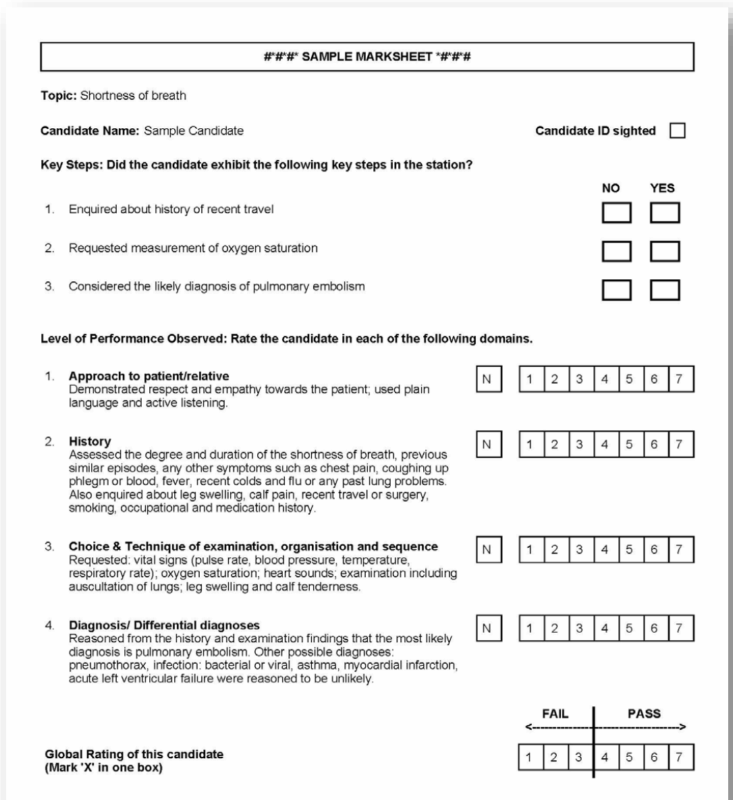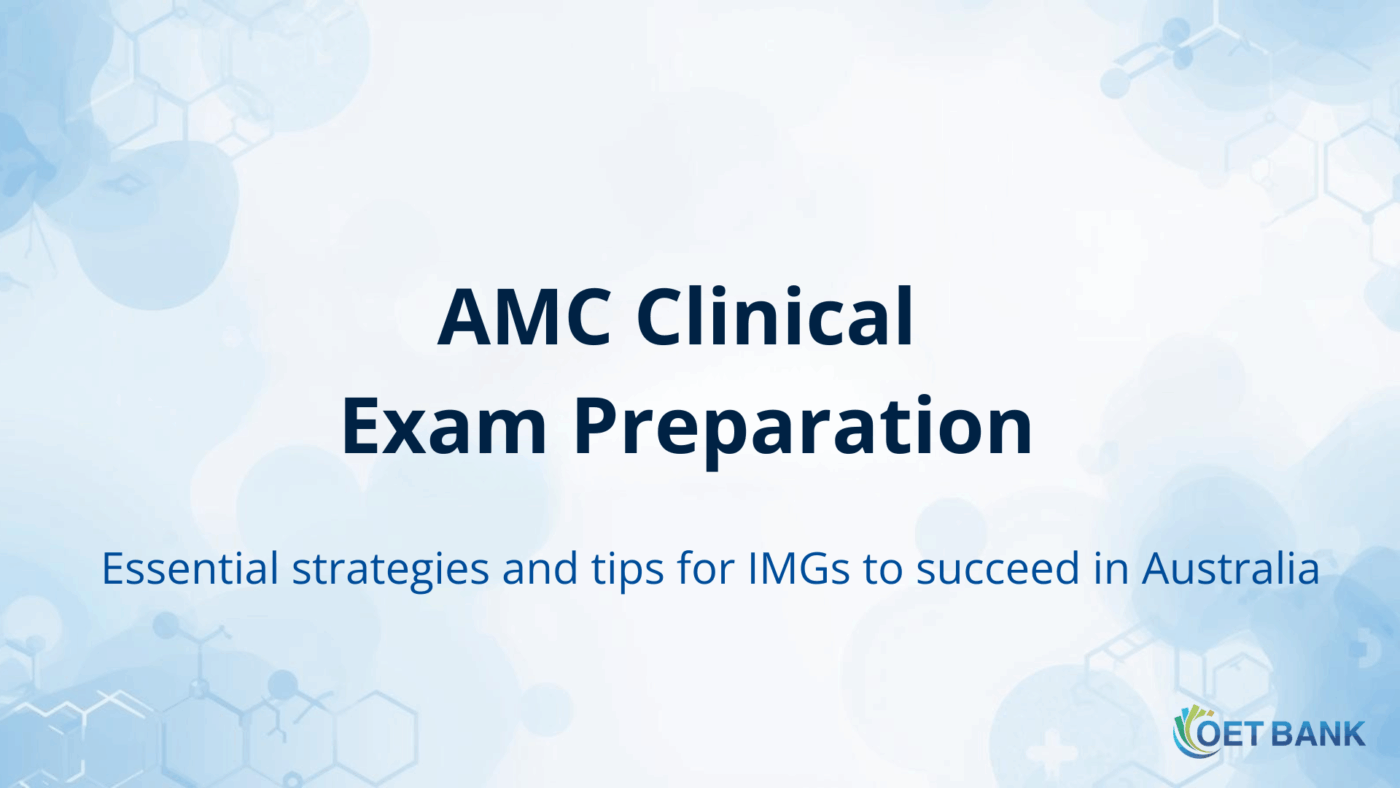Registration & Pathways
Pass the AMC Clinical: What Every IMG Should Know
If you’re preparing for the AMC Clinical Examination, you’re already past some of the biggest hurdles on your journey to becoming a registered doctor in Australia.
The exam tests not only your medical knowledge but also your ability to communicate effectively and respond appropriately in real clinical scenarios.
This article explains the key features of the AMC Clinical and outlines both domestic and onshore preparation strategies for IMGs.
🩺 What Is the AMC Clinical Examination?
The AMC Clinical Examination (AMC Clinical) is a practical assessment designed for IMGs who wish to obtain medical registration in Australia.
It evaluates your clinical skills through role-play stations that simulate real-life medical situations across various disciplines.
Exam Overview
| Category | Details |
|---|---|
| Format | Practical, role-play based examination (16 stations total) |
| Disciplines | Medicine, Surgery, Paediatrics, Obstetrics & Gynaecology, Psychiatry, Physical Examination |
| Duration | About 200 minutes (10 minutes per station + 4 rest periods) |
| Locations | Sydney, Melbourne, Brisbane |
| Passing Standard | Pass at least 9 of 14 scored stations (2 are unscored) |
| Cost | Around AUD 3,500 |
It’s similar in spirit to the OET Speaking Test, but much more intensive—testing your ability to manage consultations, communicate effectively with patients, and demonstrate appropriate clinical reasoning.
🎯 How Is It Assessed?
Each station is scored on a 7-point scale across 2–5 domains. A score of 4 or above in a domain typically indicates a pass.
Common assessment criteria include:
- Interaction with the patient
- History-taking and differential diagnosis
- Physical examination technique and judgment
- Explanation of symptoms or management plan
Criteria 1 and 2 resemble the OET communication framework—memorizing set expressions can help. However, 3 and 4 vary by case, requiring solid clinical reasoning and medical English proficiency.
Notably, even if you believe a diagnosis is unlikely, you must verbally justify why—a feature unique to the AMC system. Simply describing symptoms, as in OET, will not suffice.
Here is an official mark sheet example :

Reference: AMC Clinical Examination Specifications (2021, PDF)
🧩 Preparation Strategies
Since the AMC Clinical is performance-based, rote memorization alone will not be enough. The exam rewards spontaneous decision-making, adaptability, and fluency under pressure.
🏠 Preparing in Your Home Country
It’s difficult to replicate the fast-paced, interactive environment of the AMC Clinical while living outside Australia. Still, you can prepare efficiently by focusing on two core areas:
- Reproducible Pronunciation and Communication Skills
Build a solid foundation in speaking “intelligible English.” Many IMGs underestimate how subtle pronunciation issues can affect comprehension in real consultations. - Medical Vocabulary and Contextual Knowledge
You should aim to internalize clinical vocabulary through context-based learning rather than isolated word lists.
Try watching English medical dramas with subtitles or following case discussions on YouTube. This approach aligns with the CLIL method (Content and Language Integrated Learning)—learning English through engaging medical content.
🇦🇺 Preparing in Australia
Once in Australia, the focus shifts from input to real-time output—reacting quickly and appropriately to patient cues.
The most practical approach is to enroll in a local AMC preparation course, such as:
- ARIMGSAS (Melbourne)
- HEAL (Brisbane)
These programs cost around AUD 4,500, but they offer enormous value: structured case simulations, access to updated materials, and a strong peer network.
For most IMGs, having study partners and receiving feedback from local instructors significantly boosts both confidence and fluency.
🏥 Alternative Option: Workplace-Based Assessment (WBA)
If you find the AMC Clinical particularly challenging (its pass rate hovers around 20–30%), there is an alternative pathway called the Workplace-Based Assessment (WBA).
This route allows IMGs who have already passed the AMC MCQ to gain registration through supervised practice at an approved hospital.
Eligibility Requirements
- Passed the AMC CAT MCQ
- Hold Limited Registration
- Have an appointed hospital position
References:
WBA Eligibility and Application
List of Accredited WBA Programs
It’s a highly competitive option, but if you secure a placement, it provides invaluable hands-on experience in an Australian clinical setting.
🧠 Final Thoughts
The AMC Clinical demands not only medical knowledge but also adaptability, empathy, and real-time English communication skills.
Unlike the written AMC MCQ, it reflects how you perform in motion—your ability to think, respond, and build rapport instantly.
For IMGs, balancing preparation with professional duties can be tough, but developing situational awareness and language precision step by step will steadily improve your chances of success.
And remember: there’s no single route. Programs like WBA exist for a reason—choose the path that aligns with your strengths and circumstances.
If you’re preparing for OET, consider exploring our practice resources at OET Bank.
We’re designed not just as mock tests, but as powerful review tools that make it easier to analyze weaknesses and focus on what’s needed to pass.
Explore professional learning materials and courses:
👉 https://oet-bank.com/shop


